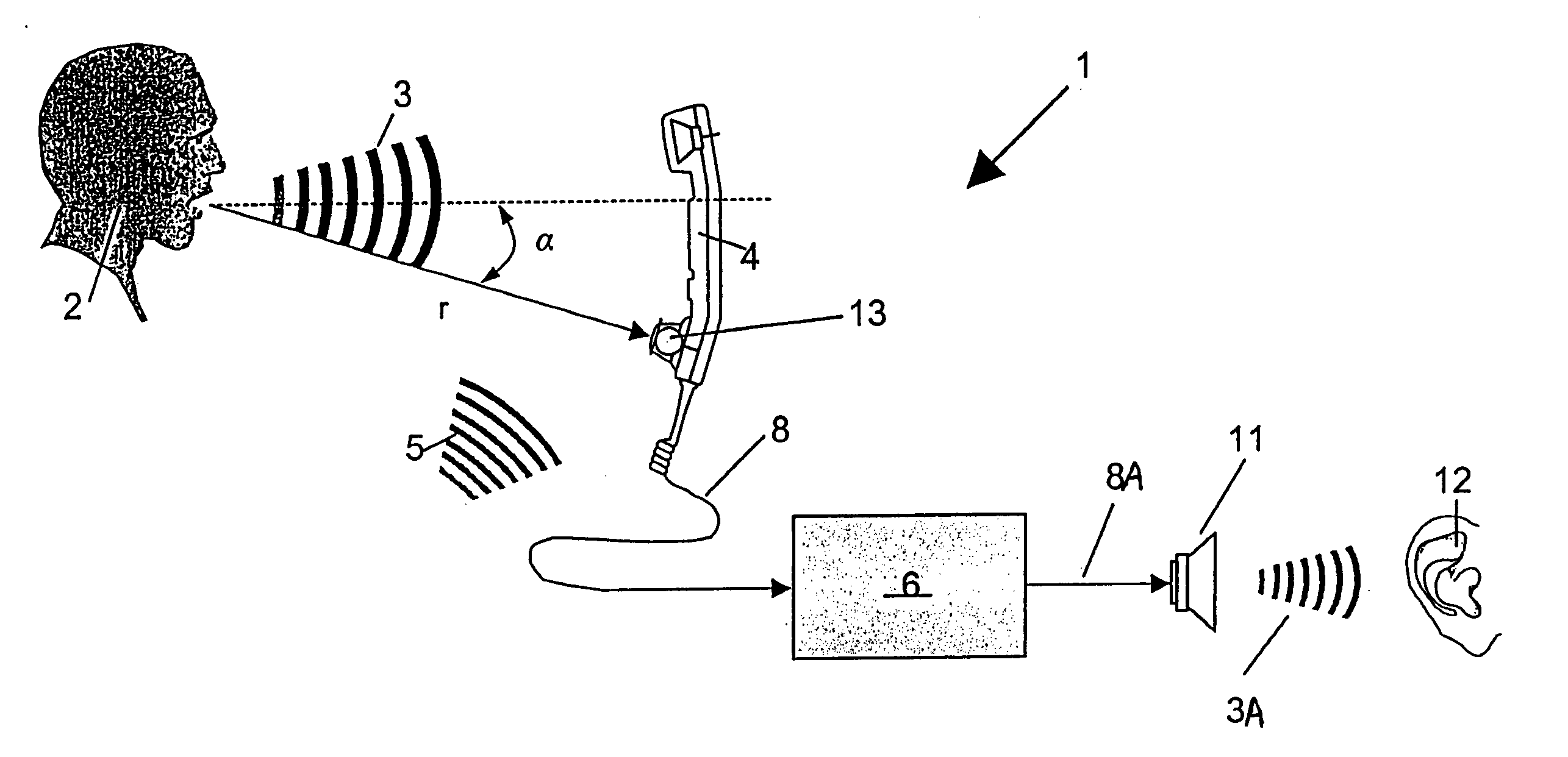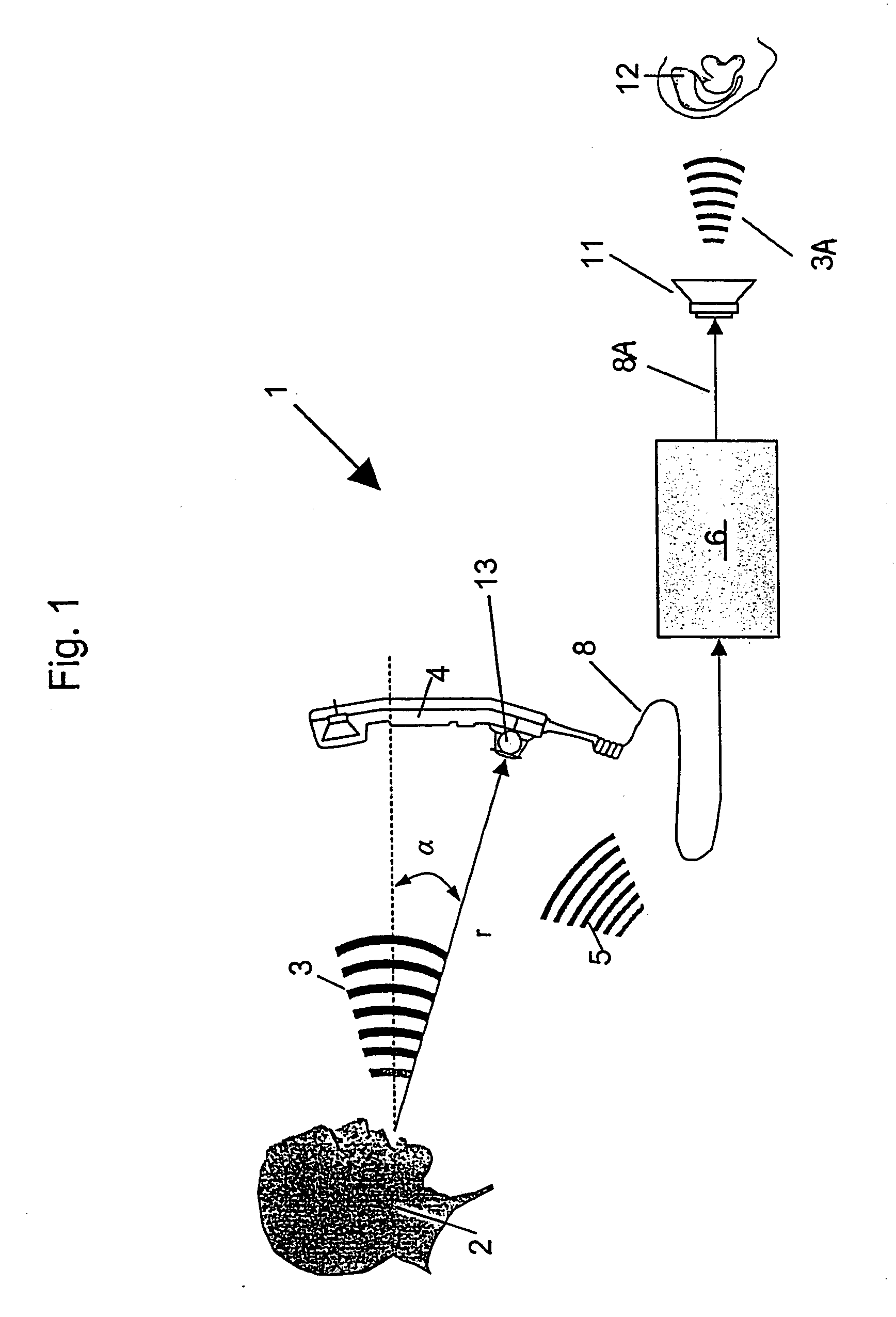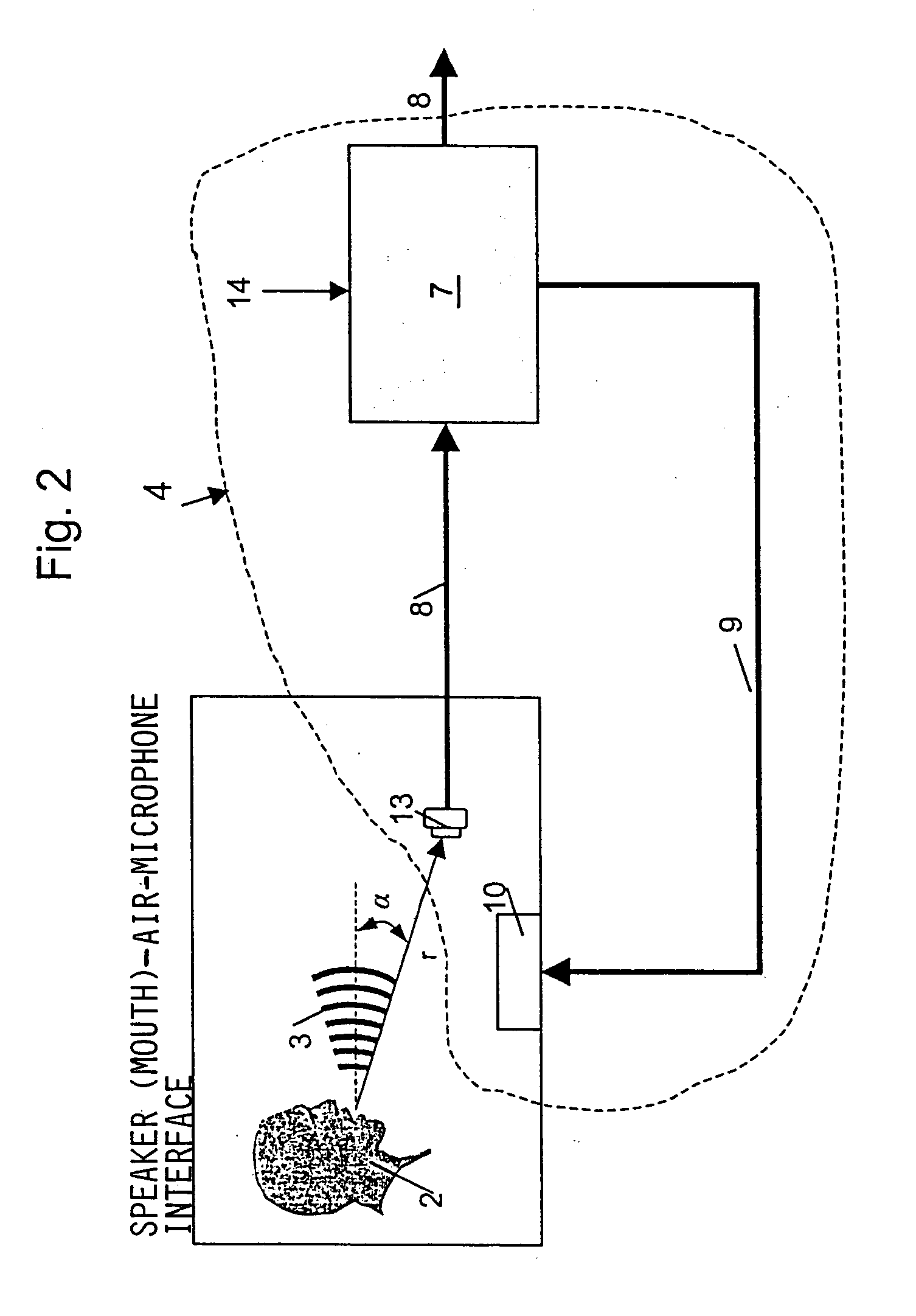Method and apparatus for improving the quality of speech signals transmitted in an aircraft communication system
- Summary
- Abstract
- Description
- Claims
- Application Information
AI Technical Summary
Benefits of technology
Problems solved by technology
Method used
Image
Examples
Embodiment Construction
[0016] FIG. 1 schematically illustrates an aircraft speech transmission arrangement 1 including a speech receiving apparatus 4, and an audio output device 11 such as a loudspeaker, connected to each other through a speech processing system 6. In the illustrated example, the speech receiving apparatus 4 is embodied as a telephone-style handset with an incorporated microphone 13, although other examples of the speech receiving apparatus 4 include a handheld microphone or an audio headset including a microphone. In any event, the speech receiving apparatus 4 is to pick up an input speech signal 3 of an incident sound wave by means of the microphone 13, which generates a corresponding converted (e.g. electrical) speech signal or speech information 8 in digital or analog form, which is provided to the speech processing system 6. After processing the input speech information 8 in any conventionally known manner, for example at least including amplification, filtering, and switching or sel...
PUM
 Login to View More
Login to View More Abstract
Description
Claims
Application Information
 Login to View More
Login to View More - R&D
- Intellectual Property
- Life Sciences
- Materials
- Tech Scout
- Unparalleled Data Quality
- Higher Quality Content
- 60% Fewer Hallucinations
Browse by: Latest US Patents, China's latest patents, Technical Efficacy Thesaurus, Application Domain, Technology Topic, Popular Technical Reports.
© 2025 PatSnap. All rights reserved.Legal|Privacy policy|Modern Slavery Act Transparency Statement|Sitemap|About US| Contact US: help@patsnap.com



